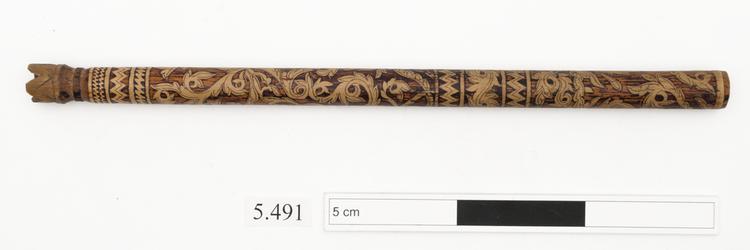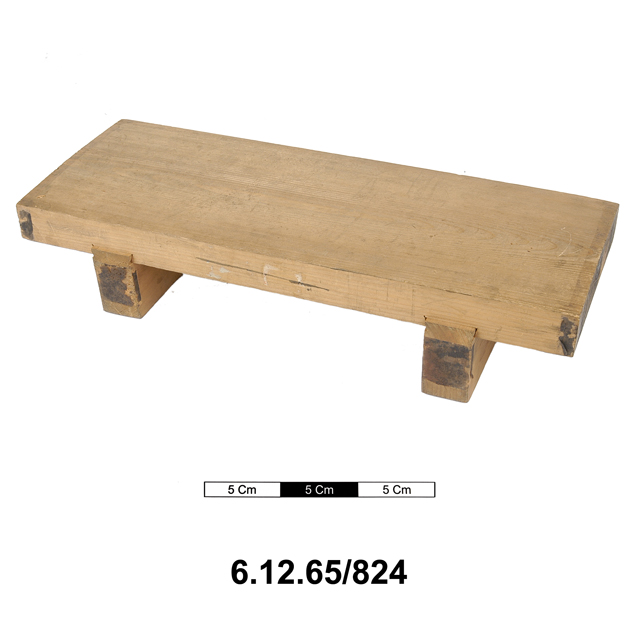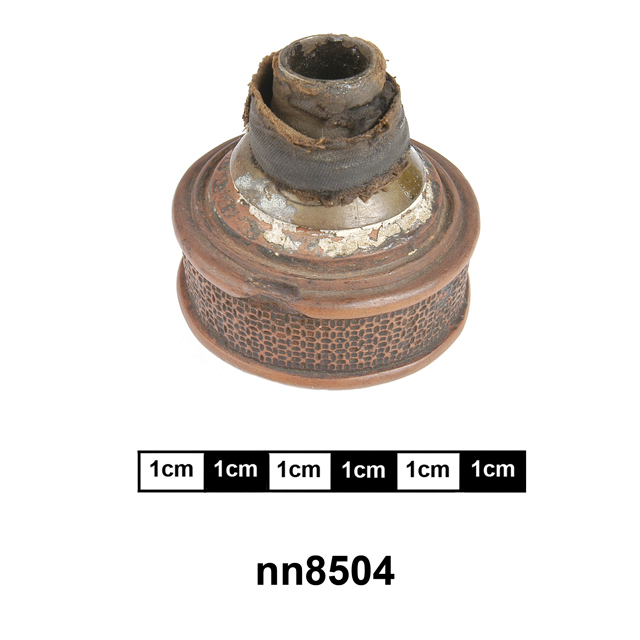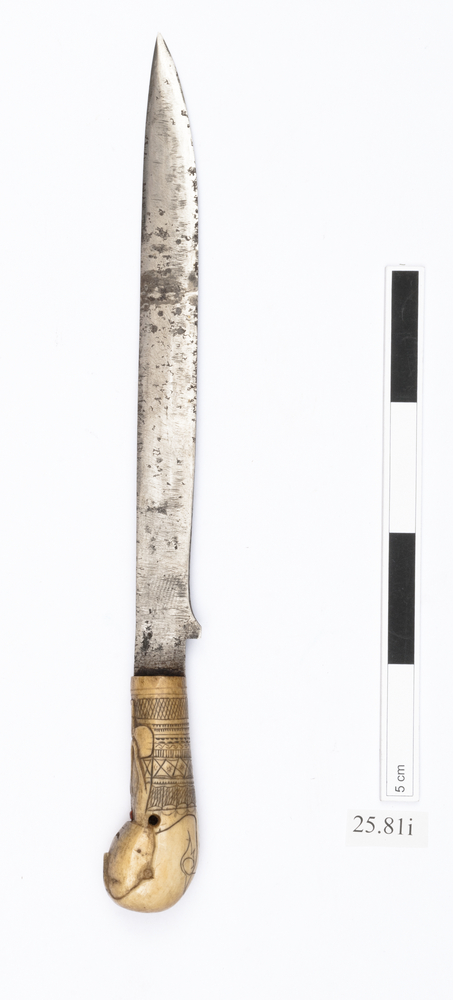This dolphin skull (Museum no. 31.3.50/46) was decorated in Japan and acquired by the Horniman in the 1950s. It is decorated with red and black lacquer, and gold powder floral designs.
It was possibly created as a sample or practice piece at a lacquer studio. This type of decorated skull is also very unusual.
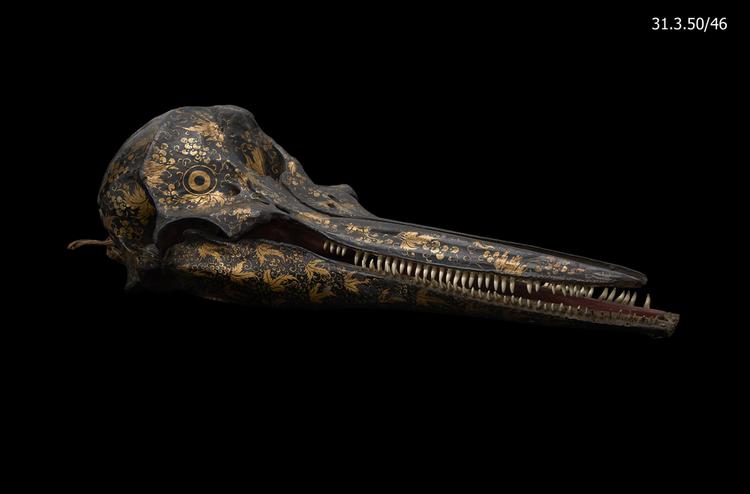
Japanese lacquer (or urushi) is produced from tree sap. It is a very durable coating and can be resistant to solvents, mild acids and water. However, it is sensitive to light and can begin to breakdown if over-exposed, which often results in loss of fragile gold decoration.
Lacquer Identification
It was important to confirm that this was genuine urushi, as some of the materials used to imitate Japanese lacquer are soluble in various cleaning solvents and can be easily damaged
Firstly, I looked at the skull under ultraviolet (UV) light, as urushi should fluoresce a dull orange colour, in contrast to the bright orange of shellac, one of the most commonly used imitation materials (shellac is made from the female lac bug and is also used as a durable coating). The UV light revealed a dull orange shade and caused the teeth to fluoresce a white/green colour.
Secondly, I tested the surface with a small amount of alcohol, using a detached flake of lacquer. This proved insoluble, suggesting that the material was not shellac or sandarac (another commonly used resin from Asia).
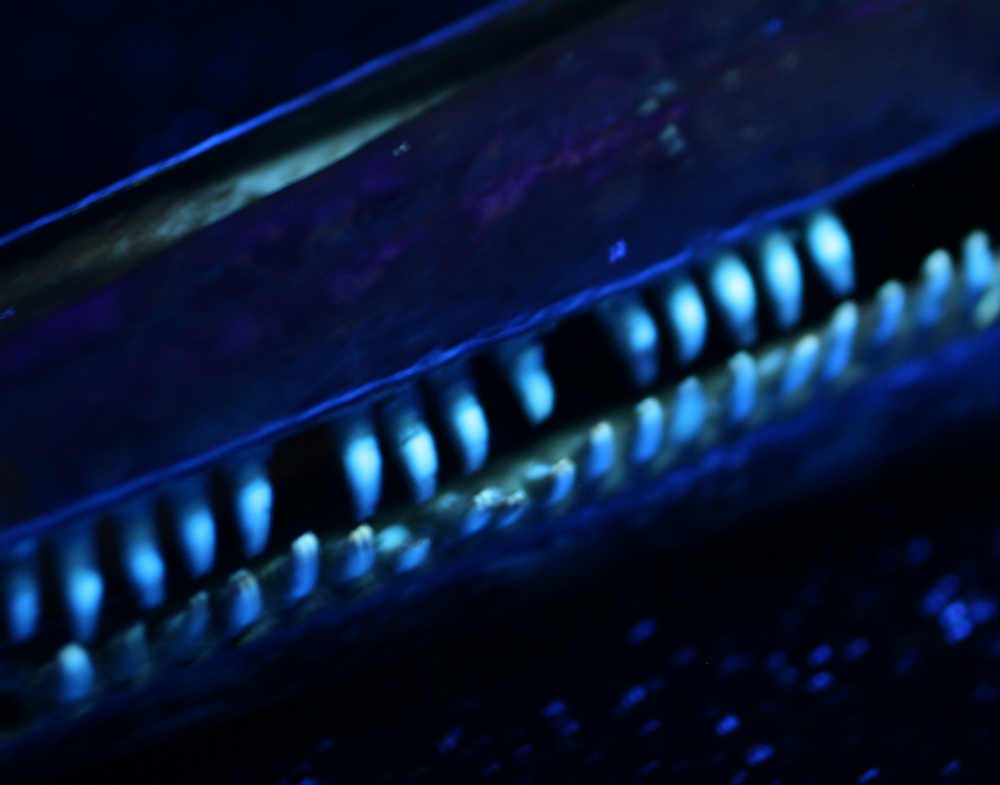
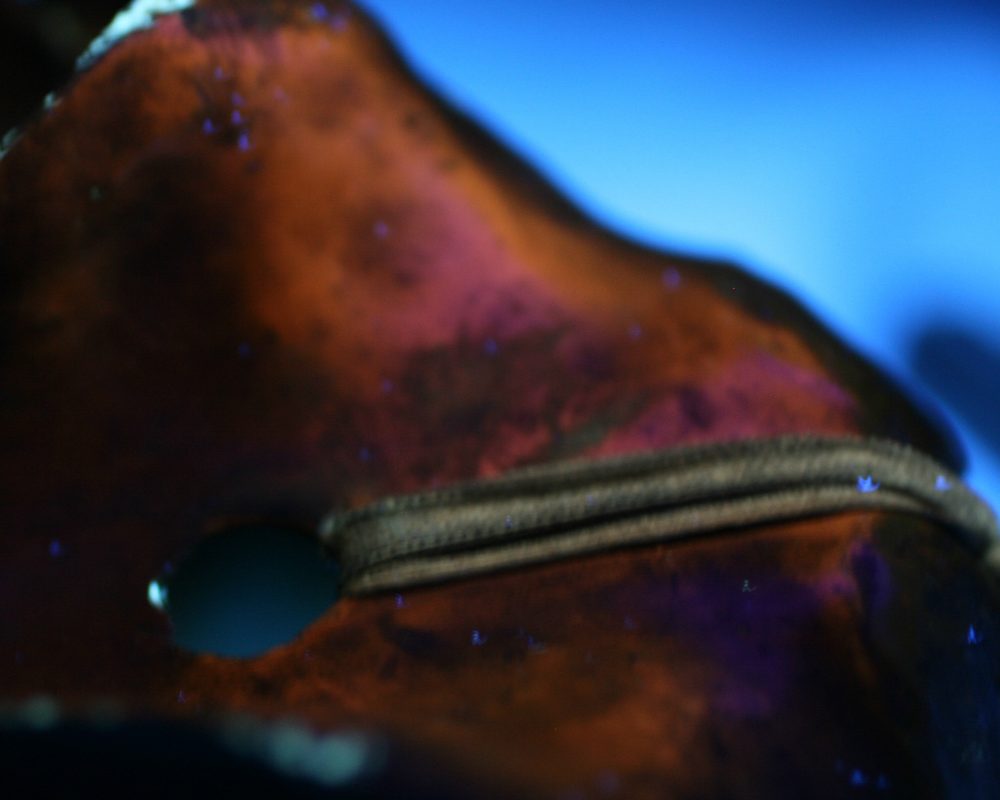
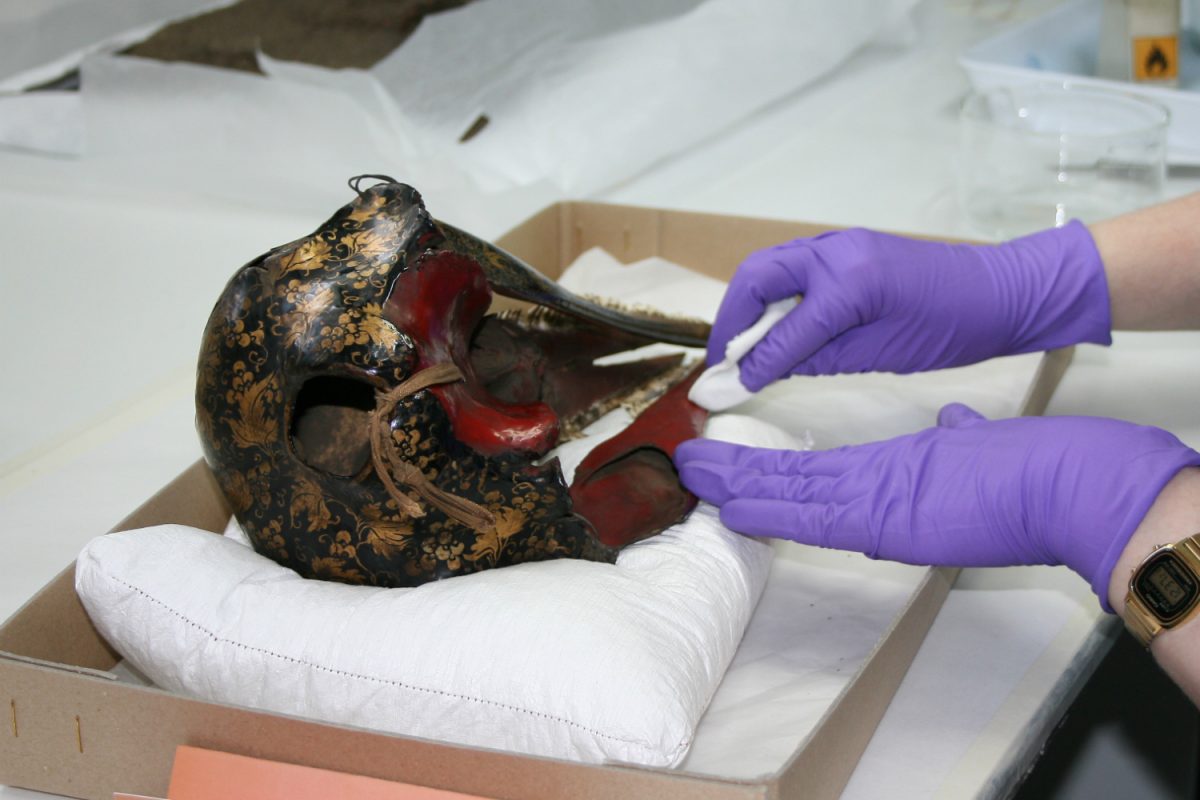
The combination of these test results confirmed that the dolphin skull is coated with urushi, not an imitation resin.
Conservation Treatment
The dolphin skull required extensive conservation work, including the cleaning and stabilisation of several loose sections and breaks.
The large crack running across the top of the skull was a challenge to conserve. I was able to close this crack-line by placing adhesive-coated Japanese tissue (once dry) between the broken edges. I then used a solvent to reactivate the dried adhesive and applied pressure to join the two sides together.
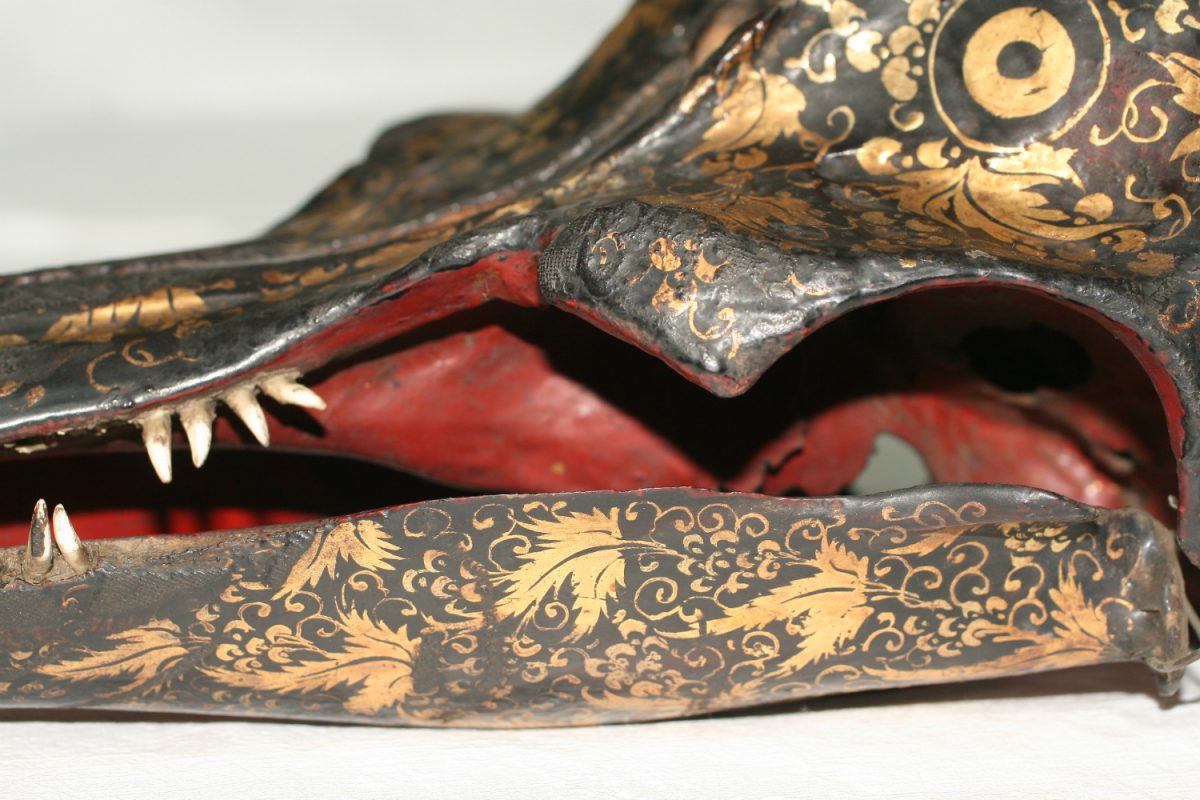

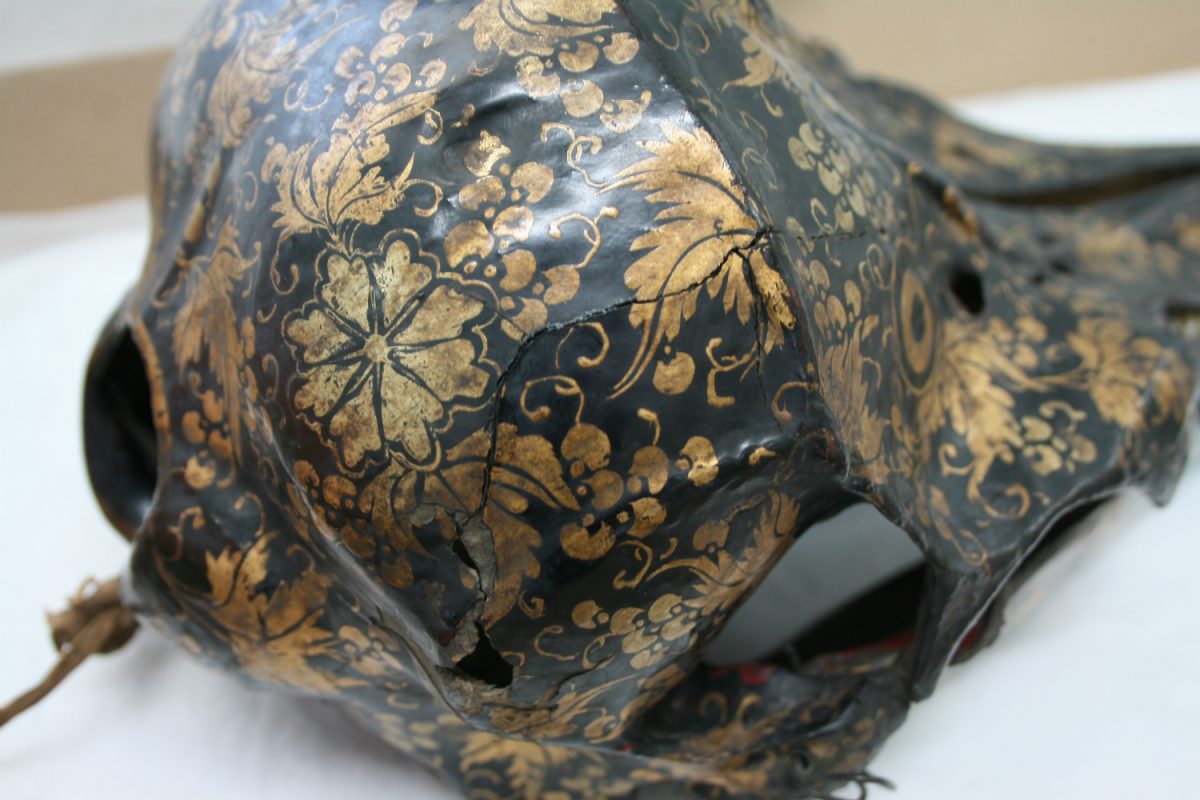
I removed dust using a soft brush and adjustable vacuum cleaner before wet cleaning the surface, which successfully removed stubborn dirt and staining.
I also used a water solution to clean the teeth before securing loose teeth in place using a reversible adhesive.
The dolphin skull has now been stabilised and the decoration can be more easily appreciated.



